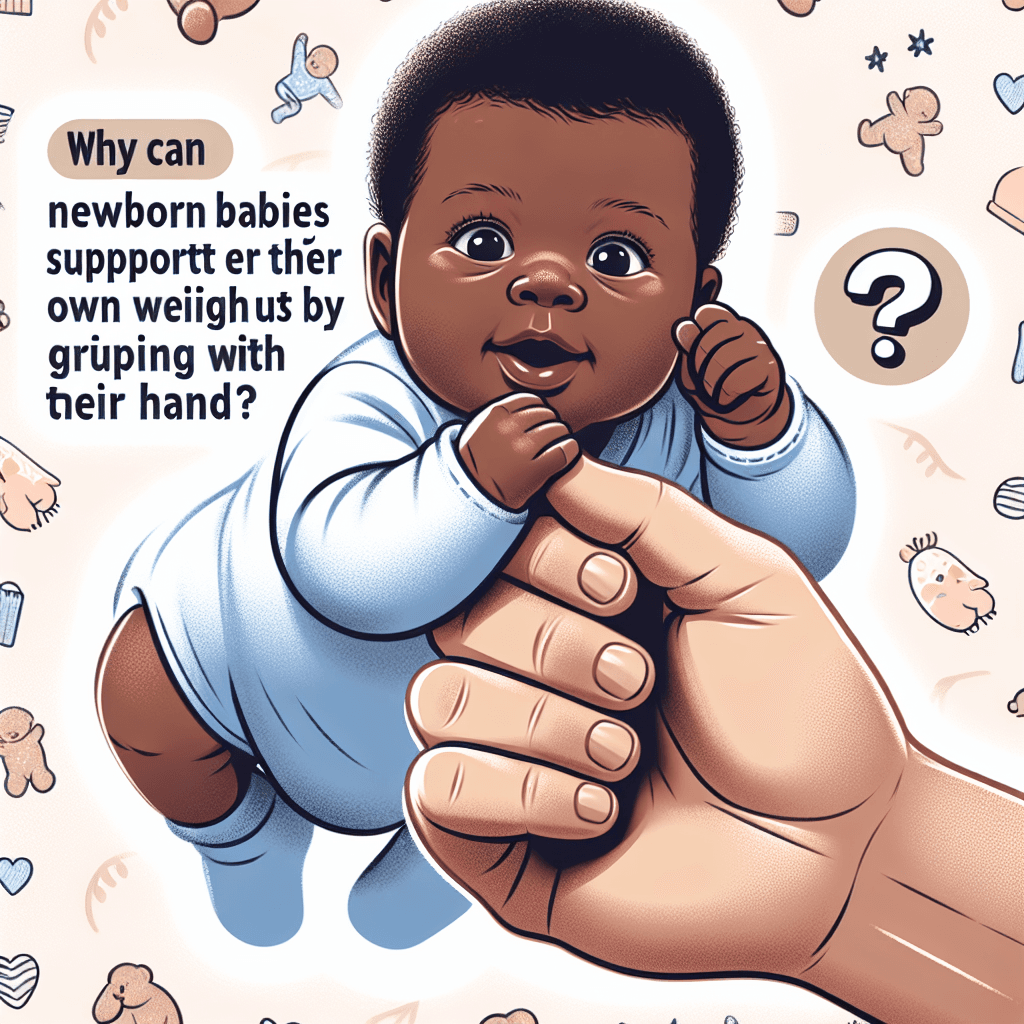Why can newborn babies support their own body weight just by gripping with their hands
Newborns can't even lift their own heads, yet their grip is an evolutionary superpower strong enough to support their entire body weight. Discover the ancient survival instinct behind this incredible, built-in feat of strength.


Too Long; Didn't Read
TLDR: It is a primitive survival instinct called the palmar grasp reflex, an evolutionary holdover from our primate ancestors whose babies needed to cling to their mother's fur. The reflex is involuntary and fades after a few months.
The Incredible Newborn Grip: Why Can Babies Support Their Own Body Weight with Just Their Hands?
Have you ever placed your finger in a newborn’s palm and felt their tiny hand clamp down with surprising, almost superhuman strength? It’s a heartwarming moment, but it’s also a glimpse into a remarkable biological phenomenon. This isn't just a simple squeeze; it’s a reflex so powerful that many newborns can support their entire body weight just by gripping. This incredible ability, known as the palmar grasp reflex, is not a conscious display of strength but a fascinating echo of our evolutionary past. This post will explore the science behind this newborn superpower, uncovering why it exists, how it works, and what it tells us about infant development.
What is the Palmar Grasp Reflex?
The first thing to understand is that this powerful grip is not a choice. It's an involuntary, primitive reflex hardwired into a baby’s nervous system. Primitive reflexes are automatic actions that originate in the brainstem, bypassing the conscious, thinking part of the brain. They are essential for a baby's survival in the first few weeks and months of life.
The palmar grasp reflex is triggered when an object, like a finger or a small toy, is pressed into a baby's palm. The pressure causes the fingers to curl inward and grip the object tightly. This reflex appears as early as 16 weeks in utero and is fully present at birth. It’s one of several reflexes, including the rooting and sucking reflexes, that doctors check to assess a newborn's neurological health.
The Evolutionary "Why": A Relic from Our Primate Ancestors
The most compelling explanation for the palmar grasp reflex lies deep in our evolutionary history. Evolutionary biologists widely believe this reflex is a vestigial trait—a leftover from our primate ancestors. For millions of years, the infants of our ancient relatives needed to cling tightly to their mother's fur to survive.
Consider a mother ape or monkey moving through trees. Her hands are occupied with climbing and foraging. The infant’s survival depends entirely on its ability to hold on securely. In this environment, a strong, automatic grip wasn't just helpful; it was a life-or-death necessity. Infants with a weaker grip were more likely to fall and perish, meaning they wouldn't pass on their genes. Through natural selection, this powerful, life-saving reflex became a standard feature for primate infants, including our own human ancestors. While human babies no longer need to cling to fur, the ancient neurological wiring remains.
The Neurological "How": A Simple Circuit for a Strong Response
Because the palmar grasp is a primitive reflex, it's controlled by a simple neural circuit that doesn't involve the higher-level processing parts of the brain (the cerebral cortex). Here’s a simplified breakdown of what happens:
- Stimulus: Pressure sensors in the palm of the hand are activated.
- Signal: Nerves send a signal from the hand directly to the spinal cord and brainstem.
- Response: The brainstem immediately sends a signal back to the muscles in the forearm and hand, instructing them to contract and grip—powerfully and without conscious thought.
This direct, non-thinking pathway is what makes the reflex so quick and forceful. The baby isn't "deciding" to hold on; their body is simply executing a pre-programmed survival command.
A Sign of Growth: The Reflex's Disappearance
Just as the presence of the palmar grasp reflex is a sign of a healthy nervous system at birth, its disappearance is a critical developmental milestone. The reflex typically begins to fade around three to four months of age and is usually gone by six months.
This "vanishing act" doesn't mean the baby is getting weaker. On the contrary, it signals that the brain is maturing. The higher-functioning cerebral cortex is developing and beginning to override these primitive reflexes. The involuntary grip is replaced by voluntary, intentional actions. A baby who once gripped by reflex will soon learn to consciously reach for, grasp, and let go of objects—the foundational skills for everything from playing with blocks to feeding themselves.
Conclusion
The astonishing strength in a newborn’s grip is more than just a cute party trick; it's a profound link to our evolutionary past and a vital indicator of healthy neurological development. This powerful, involuntary palmar grasp reflex, born from a primal need to cling to a mother’s fur for survival, showcases how ancient survival mechanisms are still present within us today. As this reflex fades and gives way to purposeful movement, it marks a beautiful transition from instinct to intention. So, the next time a tiny hand wraps around your finger with that surprisingly strong grip, take a moment to marvel at the deep history and complex biology at play.


